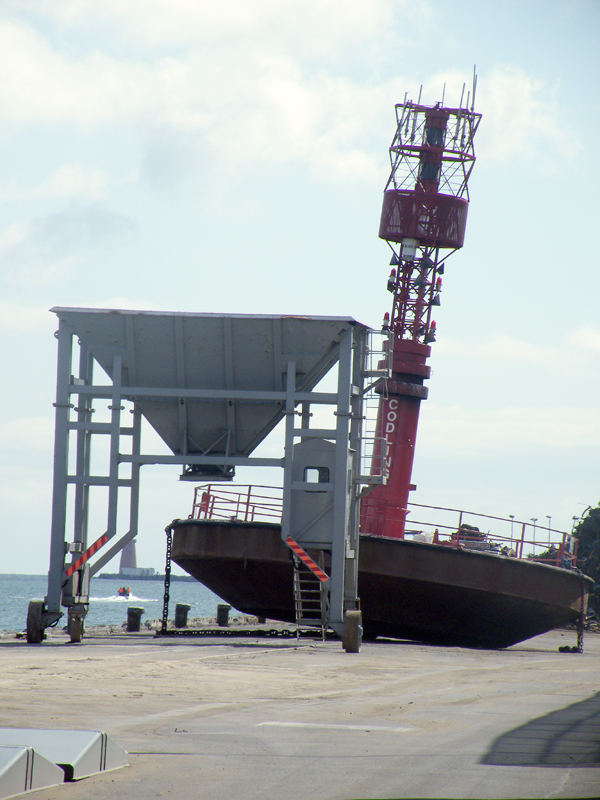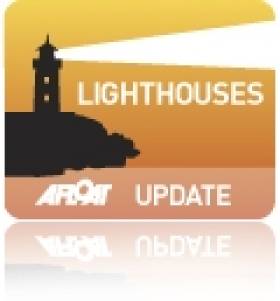Displaying items by tag: Codling Bank
Wind Farm 'Ready to Go Tomorrow'
The backers of a proposed new wind farm in the Irish Sea near Wicklow have said the project would be ready to go "tomorrow" if given permission to connect to the national grid.
Planning permission has already been obtained by Fred Olsen Renewables for the €3 billion Codling wind park project, which it set to consist of 220 turbines with a potential generating capacity of 1,100 megawatts.
Graham Cooper of Fred Olden Renewables told The Irish Times that the project is ready to start, but the Commission for Energy Regulation not yet given consent for connection to the Irish national grid.
The Irish Times has more on the story HERE.
Sitting High and Dry: The Last Lanby
The decommissioned Codling Bank (Lanby) buoy is no longer in the water but rests firmly on a quayside in Dublin Port, writes Jehan Ashmore. In late July the Commissioners of Irish Lights withdrew the Lanby (Large Automated Navigation Buoy) was towed by the tender ILV Granuaile to the Coal Quay where the Lanby was hoisted out of the water.
The Lanby neighbours the adjacant Hammond Lane Company which is due to demolish the structure for scrapping. The removal of the Lanby, the last to serve in Irish waters, completes the withdrawal of Major Floating Aids to Navigation (MFAs) that also consisted of Lightships.
The Lanby was replaced with a Type 1 buoy to mark the Codling Bank offshore of Arklow. The new aids to navigation buoy has a focal in excess of 5-metres is fitted with a racon and Automatic Identification System (AIS).
Apart from loading scrap-metal the Coal Quay is also used by vessels for dry-cargoes trades such as animal feed, re-cycled glass and fertiliser.

The decommissioned Codling Bank Lanby on the Coal Quay Dublin on 8 August awaiting demolition. Photo: Jehan Ashmore
From Last Lightship to Last Lanby
The Commissioners of Irish Lights (CIL) withdrew the Codling Bank Lanby off Arklow on 24 July. This was the last Lanby to serve in Irish waters. The Lanby (Large Automated Navigation Buoy) is essentially a floating circular platform with a tower positioned centrally and fitted with a light to ward off potential dangers to shipping, writes Jehan Ashmore.
The Lanby was replaced with a Type 1 buoy which has a focal in excess of 5 metres and is fitted with a racon and Automatic Identification System (AIS).
Irish Lights aids to navigation tender, ILV Granuaile towed the former Codling Lanby to Dublin. The Lanby was hoisted out of the water and remains high and dry on the quayside awaiting demolition by the Hammond Lane Company. This final Lanby completes the withdrawal of Major Floating Aids to Navigation (MFAs) throughout Irish waters.
Lanbys were first introduced in the 1960s as replacements for lightships on certain stations. The ALF Gannet, the last Irish lightship, which was converted in the mid-1980's into an Automatic Light-Float (ALF) was withdrawn from the South Rock station off Portavogie in February 2009. The ALF Gannet was towed to Dun Laoghaire and laid-up at Carlisle Pier. Earlier this year ALF Gannet was sold and towed to new owners in the UK.
With modern navigating systems coupled with the amount of traffic and the degree of risk, CIL made the decision to withdraw the MFAs and replace them with Type 1 buoys.
The work of maintaining navigational aids is conducted at CIL's joint marine depot and head-quarters at Dun Laoghaire, which was built in 2008. A marine-depot facility did exist previously at the same site while administrative offices were located in Pembroke Street, Dublin.
In June, CIL celebrated its 200th year since establishment in 1810. The authority is entrusted to maintain, service and update all aids to navigation around the entire coastline of Ireland, providing a vital and invaluable service to mariners.
Assides the use of the tender, ILV Granuaile, Irish Lights also operate the tug-buoy tender, Puffin, also based at Dun Laoghaire.

The Codling LANBY at Irish Lights headquarters, Dun Laoghaire in 2009 with tender ILV Granuaile. Photo: Jehan Ashmore/ShipSNAPS






























































